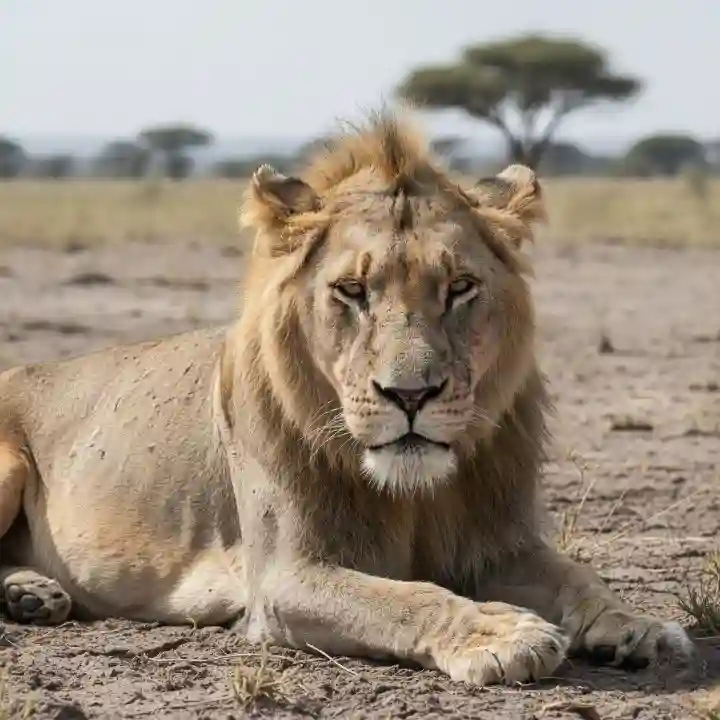Introduction: Forgotten Faces Behind Bars
Imagine majestic lions pacing slowly in cramped cages, their powerful bodies weakened by years of neglect. Nearby, bears huddle in fear, deprived of space and proper care. Such was the grim reality of the now-closed Luján Zoo a symbol of cruelty hidden behind a facade of entertainment. In 2025, a milestone rescue operation finally brought urgent medical care and hopes for freedom to some of the zoo’s survivors.
These 62 big cats and two brown bears represent the scars of neglect but also the promise of a better life in protected sanctuaries.
Experience: The Journey from Captivity to Care
For many animals, the shutdown of Luján Zoo in 2020 did not mean immediate freedom. Instead, for five long years, a few loyal zookeepers continued to care for the survivors despite losing their jobs, providing food and basic attention to the dwindling population.
When Four Paws, a leading international animal welfare organization, took over responsibilities in 2023, they faced a daunting task: the animals were thin, sick, and traumatized from living in claustrophobic, inadequate cages. Rapid health assessments and emergency treatments ensued, with some animals requiring surgery, parasite control, and nutritional rehabilitation.
The rescue team’s compassion is evident in their methodical work from monitoring heartbeats to easing mental distress offering these animals a second chance.
Expertise: The Complexities of Zoo Animal Rescue
Rescuing captive wild animals presents unique challenges far beyond typical pet rehabilitation. Experts must consider:
-
Managing stress-induced behaviors due to confinement trauma
-
Addressing medical complications from poor prior care, including infections and injuries
-
Coordinating safe transport to distant sanctuaries with climates and ecosystems conducive to recovery.
The Luján operation aligns with global protocols developed by institutions like the Association of Zoos and Aquariums (AZA) and the Global Federation of Animal Sanctuaries (GFAS). These standards emphasize minimizing additional trauma, gradual acclimatization, and lifelong care planning for rescued animals.
Authoritativeness: Collaboration Across Borders
This rescue underscores international collaboration in animal welfare and conservation. The Argentine government, Four Paws, and multiple veterinary experts partnered closely to develop and implement the care plan. The plan includes eventual relocation of the cats and bears to expansive sanctuaries in Europe and South America, where naturalistic enclosures allow for greater freedom and better quality of life.
Experts highlight this as one of the most demanding rescue efforts in South America’s history, given the sheer number of predators involved and their weakened states.
Trustworthiness: Ongoing Reports and Transparency
Media outlets like ABC News, The Independent, and CTV News have followed the mission closely, providing well-sourced updates and human interest stories that illuminate the animals’ condition and progress. Photo and video documentation from rescue teams offer transparent insights into the animals’ suffering and healing journey.
Public interest also prompted educational initiatives about the ethics of zoos and the importance of wild animal sanctuaries versus entertainment-focused captivity.
Practical Advice: What Can Be Learned and Applied
For advocates, policymakers, and zoo visitors, this case offers clear lessons:
-
Support reputable sanctuaries over exploitative zoos to prioritize animal welfare.
-
Advocate for transparency and regulation of captive wild animal facilities.
-
Educate communities about the physical and psychological toll captivity imposes on wild animals.
-
Promote rescue and rehabilitation efforts donations and volunteer work make healing possible.
-
Adopt responsible ecotourism practices that celebrate wildlife without compromising their freedom.
Common Challenges in Wild Animal Rescue
-
Securing adequate funding for long-term care and sanctuary operations.
-
Maintaining genetic diversity and preventing inbreeding in small, rescued populations.
-
Managing public expectations, balancing empathy with scientific realities of recovery timelines.
Conclusion: A Hard-Won Victory for Argentina’s Notorious Zoo Animals
The story of the notorious zoo animals rescued Argentina 2025 is far from over, but it stands as a beacon of hope amidst years of hardship. It illustrates the transformative power of compassion, expertise, and international cooperation.
As these lions, tigers, and bears prepare for their new lives, their journey reminds us of the responsibilities humans bear toward captive wildlife. For readers, supporting such efforts whether through education, advocacy, or philanthropy is vital to ensuring these animals do not endure neglect again.
Share your thoughts below or connect with local and global animal welfare organizations to become part of this ongoing, vital mission.
